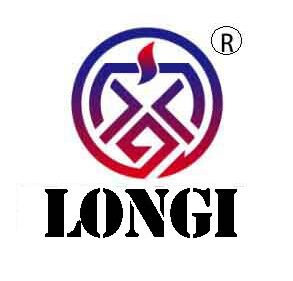A. Motor Auto-tuning (Quick Debugging Steps)
- Power On: Ensure the system is powered on.
- Input Initialization:
- Press
PARto select the language. Set 99.1 to ENGLISH. - Choose the application macro. Set 99.2 to CRANE.
- Determine if parameters should be reset to factory defaults. Set 99.3 to YES or NO.
- Select the motor control mode in 99.4: DTC (Direct Torque Control) or SCALAR.
- Enter the rated voltage in 99.5 V.
- Input the rated current in 99.6 A.
- Specify the rated frequency in 99.7 HZ.
- Set the motor’s rated speed in 99.8 RPM.
- Define the motor’s rated power in 99.9 KW.
- Press
- Motor Identification Run:
- Proceed to motor identification by selecting 99.10.
- Generally, choose ID MAGN (the motor won’t rotate).
- For STANDARD mode (motor rotates), the motor must be disconnected from the equipment.
- In REDUCED identification mode (motor rotates), the motor remains connected.
- After selecting the identification mode, a “WARNING” signal may appear.
- Press the start button to begin motor identification. This process can be stopped at any time using the stop button.
- Once the motor identification is complete, press RESET to enter actual signal display mode.
- Motor Direction Check: Verify the motor’s rotation direction using the control panel.
- Input Speed Limits and Acceleration/Deceleration Times: Enter the necessary parameters.
B. Parameter Configuration – Optimized for Google SEO
- Set parameter 10.1 to DI1 for brake acknowledgment digital input.
- Leave parameter 10.2 as NOT SEL for zero-position digital input.
- Parameter 10.3 remains NOT SEL for deceleration digital input.
- Parameter 10.4 is NOT SEL for rapid stop digital input.
- Parameter 10.5 is NOT SEL for power-on acknowledgment digital input.
- Keep parameter 10.6 as NOT SEL for synchronization request digital input.
- Set parameter 10.7 to EXT DI1.1 for chopper fault digital input.
- Configure parameter 10.8 to DI2 for the second speed level digital input.
- Set parameter 10.9 to DI5 for the third speed level digital input.
- Parameter 10.10 is set to DI6 for the fourth speed level digital input.
- Parameters 10.11 to 10.15 and 10.17, 10.18 remain NOT SEL.
- Set parameter 10.16 to DI-1L for fault reset digital input.
- Parameter group 13 deals with analog input signals. No need for modification.
- Set parameter 14.1 to BRAKE LIFT for relay output 1.
- Configure parameter 14.2 to WATCHDOG-N for relay output 2.
- Parameter 14.3 is set for relay output 3 to indicate a FAULT-N signal. When a fault occurs, the relay releases, and during power-on, the fault relay engages.
- Parameter group 15 covers analog output signals. No modifications required.
- Parameter group 16 deals with password settings. No need to change.
- Parameter group 20 defines limit values:
- Parameter 20.1: Minimum speed for the operating range.
- Parameter 20.2: Maximum speed for the operating range.
- Parameter 20.3: Maximum output current.
- Parameter 20.4: Maximum positive output torque.
- Parameter 20.5: Maximum negative output torque.
- Parameter 20.6: DC overvoltage controller.
- Parameter 20.7: DC undervoltage controller.
- Parameter 20.8: Minimum frequency for the operating range.
- Parameter 20.9: Maximum frequency for the operating range.
- Parameters 20.10 to 20.13 relate to analog inputs but are not detailed here.
- Parameter 21.1 is not to be changed.
- Set parameter 21.2 for the field excitation time, approximately 4 times the motor’s rated KW (in milliseconds).
- Parameter group 23 covers speed control gains, integral and derivative times, motor slip, etc. Generally left unchanged.
- Parameter group 24 deals with torque build-up time. Typically not modified.
- Parameter group 26 allows compensation voltage setting for the motor (only in SCALAR mode).
- Parameter group 27 configures the braking chopper:
- Set parameter 27.1 to ON for brake chopper control.
- Parameter 27.2 is set to FAULT to activate overload protection for the braking resistor.
- Enter the actual value for the braking resistor in parameter 27.3.
- Set the time constant for the braking resistor in parameter 27.4 to 300S.
- Define the maximum continuous braking power for the resistor in parameter 27.5.
- Set the control mode for the brake chopper control to AS GENERATOR in parameter 27.6.
- Parameter group 28 deals with motor modeling. Typically not modified.
- Parameter group 30 covers fault functions. Generally left unchanged.
- Parameter group 50 configures encoder values:
- Set the number of encoder pulses in parameter 50.1.
- Define the calculation method for encoder pulses in parameter 50.2.
- Parameter 50.3 is set to FAULT for encoder fault action.
- Set the encoder monitoring delay time in parameter 50.4 (avoid setting to 0).
- Parameter 50.5 determines the encoder feedback usage, typically set to TRUE.
- Parameter group 60 handles the switch between local and external operation.
- Parameter groups 61 and 62 deal with speed monitoring. Generally not modified.
- Parameter group 63 covers torque monitoring. Typically left unchanged.
- Parameter group 64 is for crane mode:
- Set parameter 64.1 to TRUE for STAND ALONE mode.
- Parameter 64.10 is configured to STEPJOYST or STEPRADIO.
- Parameters 64.13 to 64.16 define the speeds for the four speed levels (as a percentage of rated speed).
- Parameter group 65 deals with motor field current settings. Generally not modified.
- Parameter group 66 covers torque verification, typically left unchanged.
- Parameter group 67 configures brake control:
- Set the brake application time to 0.5S in parameter 67.1.
- Define the brake fault delay as 0.5S in parameter 67.2.
- Parameters 67.3 to 67.10 are not detailed but can be set as needed.
- Parameter group 68 is for power optimization, typically not modified.
- Parameter group 69 defines the maximum speed and acceleration/deceleration times.
- Parameter group 98 activates optional modules.
